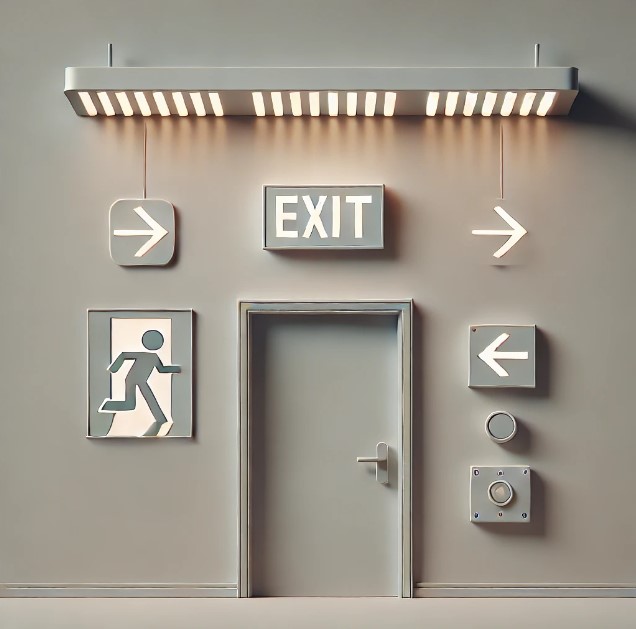-
Product Catalog
- Security and Surveillance Systems
- Automatic Circuit Breakers for Direct Current (DC) Circuits with Integrated Overload, Short-Circuit, and Voltage Stabilization Protection Functions
- Lighting with the help of electrical energy
- Automation and Control Systems
- Sealing profiles | rubber | gaskets | strips
- Inflatable Liquid Storage Tanks | Reservoirs | Bladders
- Inflatable rubber plugs for sealing high-pressure plumbing pipes
- Electrical distribution and installation
- Solar Energy Generation and Management Equipment
- HVAC control solutions for heating and ventilation.
- Special products and accessories
- Other products
- Safety tools
- Quality used products
Emergency lighting
-
Read more

Emergency light fixtures are specialized lighting devices designed to ensure safety during power outages or emergencies. They activate automatically when there is a power failure, providing a minimum lighting system in the dark until power is restored or evacuation is completed.
Main functions of emergency light fixtures:
Emergency lighting:
Ensures visibility during emergencies when the main power supply is interrupted.
Most commonly installed in corridors, staircases, exits, underground parking lots, and other areas where safe movement in the dark is essential.
Evacuation lighting:Evacuation route marking: Helps people find safe evacuation routes by displaying clear signs or lights directing them to emergency exits.
These fixtures often have built-in illuminated signs with “Exit” or “Išėjimas” (Exit) to indicate the direction during evacuation.
Technical specifications:Power and energy sources:
Usually equipped with a backup battery that allows the fixture to operate for 1-3 hours, depending on the model.
Utilizes LED technology, which conserves energy and provides a long service life.
Current load (A):Emergency light fixtures consume minimal electrical energy, as LED diodes are efficient, providing sufficient illumination with low energy consumption.
Operating voltage:Typically operates at 220–240V, but when the main power system is interrupted, it automatically switches to the built-in battery, which usually operates at low voltage (12V or 24V).
Operating temperature:Emergency light fixtures can function in various temperature conditions, typically ranging from -10°C to +40°C, making them suitable for both indoor and outdoor use.
Certificates and safety:Compliant with the EN 60598-2-22 standard, which sets technical requirements for emergency lighting devices.
Most emergency light fixtures have an IP rating, usually IP65, meaning they are resistant to dust and water, making them suitable for different locations.
Types of emergency light fixtures:Maintained operation:
Operates in both normal and emergency modes. This means that these fixtures are lit both during regular power supply and during outages.
Non-maintained operation:Illuminates only when the power supply fails. This helps save energy since these fixtures are not used until an emergency occurs.
Combined:These fixtures combine features of both types. They can be constantly illuminated or only during a power outage, depending on the settings.
Pros:Safety and reliability: Ensures visibility in a building even during a power outage, aiding in the evacuation of people.
Energy efficiency: LED technology ensures low energy consumption and a long service life.
Automatic activation: No additional human action is required—fixtures automatically turn on when the power supply fails.
Various mounting options: Can be mounted on ceilings, walls, or suspended, depending on the model.
Cons:Regular maintenance: Batteries need to be checked periodically and replaced if necessary, as they have a limited lifespan.
Cost: High-quality emergency light fixtures can be more expensive due to backup batteries and integrated features.
Conclusion:Emergency light fixtures are an essential safety device for both residential and commercial buildings. They ensure safety in extreme situations when quick and safe evacuation from the building is necessary and are required according to building safety standards.
No items found.
US IN SOCIAL NETWORKS
























